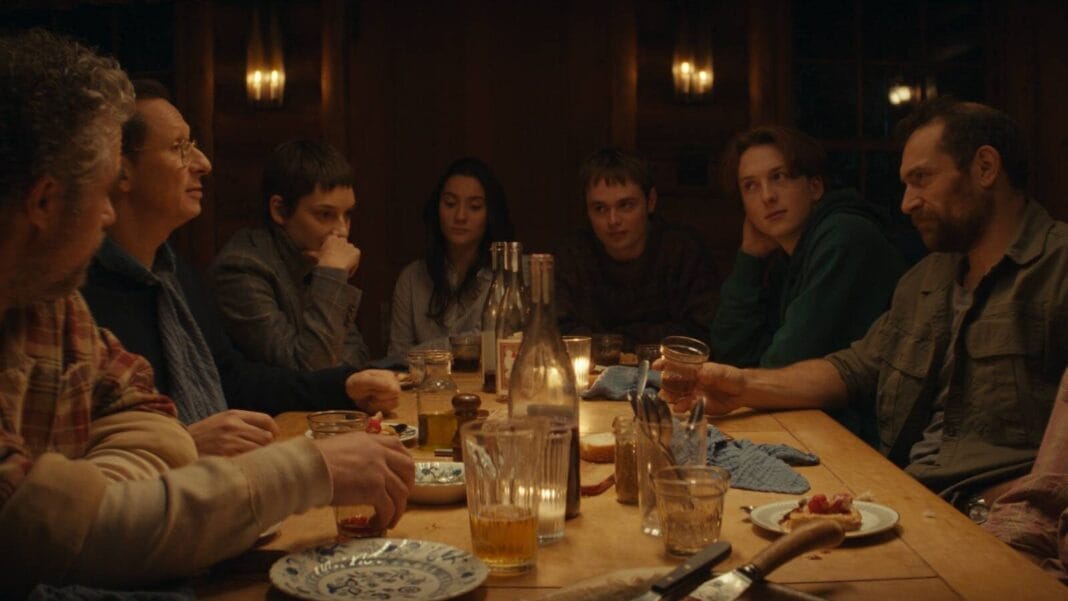Embarking on a Journey through the Real and Fictional at NYFF62
The New York Film Festival, renowned for its eclectic selection and thought-provoking narratives, has once again
presented us with two strikingly compelling films: Philippe Lesage’s Who by Fire and
Nicolás Pereda’s Lázaro at Night. As these filmmakers masterfully blur the thin line
between reality and fiction, audiences find themselves entwined in a cinematic experience that challenges
perceptions and evokes profound reflections. This review article will delve into the intricate storytelling and
distinctive cinematic techniques employed in these films, providing an engaging and comprehensive analysis.
Review of Who by Fire and Lázaro at Night
The Artful Illusion of Reality in Who by Fire
Philippe Lesage’s Who by Fire takes the audience on a mesmerizing journey through a seemingly mundane
landscape transformed into a tapestry of existential inquiry and emotional exploration. Through stunning
cinematography and a deeply evocative narrative, Lesage crafts a film that is both a visual delight and a
profound philosophical statement. The movie presents characters that are sharply authentic, yet hint at a
surreal existence, forcing the audience to question the very fabric of their own reality.
The subtle interplay of light and shadow, accentuated by a haunting musical score, draws viewers into a world
where every image, sound, and silence carries significant weight. As the story unfolds, we witness how Lesage’s
narrative techniques seamlessly weave reality with fiction, leaving the audience suspended between what is real
and what is imagined. The engaging storytelling keeps the audience rapt, rooting for characters who navigate the
complexities of human connection, loss, and redemption.
The Intricate Layers of Storytelling in Lázaro at Night
In contrast, Nicolás Pereda’s Lázaro at Night employs a restrained yet profoundly impactful style.
This film demonstrates Pereda’s exceptional ability to transform ordinary occurrences into extraordinary
moments of insight. Through minimalistic dialogue and deliberate pacing, the narrative builds a symphonic rhythm
of cinematic beauty, creating a meditative viewing experience.
Pereda immerses his audience in a nocturnal world, weaving a narrative rich with cultural nuances and personal
reflection. His characters come alive in a space that defies time, resonating with audiences long after the
credits roll. By juxtaposing reality with imaginative scenarios, Pereda invites his audience to view the world
through an interpretative lens, redefining the boundaries of traditional storytelling.
The film’s understated elegance lies in its capacity to provoke thought, evoking a myriad of emotions that
transcend the screen. Each scene is meticulously crafted to maximize its impact, building layers of meaning that
invite multiple interpretations. Pereda’s direction achieves a delicate balance between the ethereal and the
tangible, challenging audiences to reflect on their perceptions of reality.
Conclusion: A Seamless Blend of Real and Fictional Worlds
Both Who by Fire and Lázaro at Night represent a pinnacle of
cinematic art at NYFF62, skillfully leveraging the slippage between the real and fictional to deliver compelling
narratives that resonate with modern audiences. As these films invite us to question the boundaries of reality,
they also encourage a deeper understanding of our own lives and the world around us. Whether you’re a seasoned
film enthusiast or a casual viewer, these films promise not just entertainment, but an engaging encounter with
the depths of human experience.
Frequently Asked Questions
1. What themes are explored in Who by Fire?
The film delves into existential questions, human connection, and the interplay between reality and fiction,
offering a profound philosophical exploration through its narrative.
2. How does Lázaro at Night challenge traditional storytelling?
The film employs minimalist dialogue and a slow-paced narrative to create a reflective experience, inviting
audiences to engage with deeper meanings beyond the surface.
3. What makes Philippe Lesage’s directing style unique in Who by Fire?
Lesage’s use of stunning cinematography, a haunting score, and nuanced character development creates an
immersive experience that blurs the line between reality and imagination.
4. How does Nicolás Pereda use visual storytelling in Lázaro at Night?
Pereda uses understated elegance in his visuals, incorporating cultural nuances and personal reflections to
craft a narrative that resonates deeply with the audience.
5. What is the impact of the cinematography in Who by Fire?
The cinematography plays a crucial role in accentuating the emotional and philosophical undertones of the
film, transforming its mundane landscape into a rich tapestry of exploration.
6. Are these films available for streaming?
You can explore streaming options on popular platforms like Netflix,
Prime Video, and to check availability.
7. What narrative techniques are prominent in Lázaro at Night?
The film utilizes minimalistic dialogue, deliberate pacing, and cultural nuances to create a symphonic rhythm
that captivates the audience.
8. How do these films contribute to the evolution of cinema?
By challenging conventional storytelling and exploring the boundaries of reality, these films contribute to
the ongoing evolution of cinema as an art form that provokes thought and engages audiences.
9. What is the role of music in Who by Fire?
The haunting musical score in Who by Fire enhances the film’s emotional depth and philosophical queries, serving as a powerful narrative tool.
10. How do the films encourage audience engagement?
Both films invite audiences to question reality and connect emotionally with the stories, thus fostering a
deeper level of engagement and reflection throughout the viewing experience.
For more in-depth reviews and media coverage, explore our site: CineRecap.

